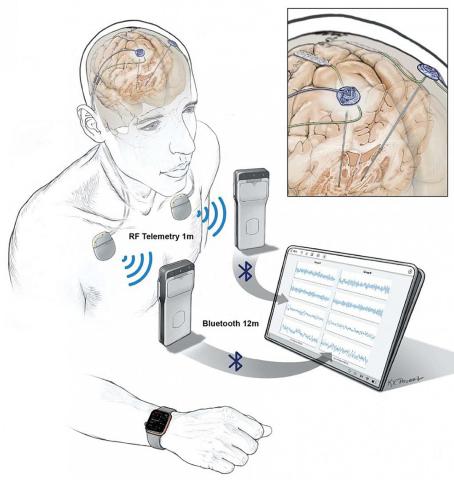Researchers Wirelessly Record Human Brain Activity

Photo: Starr Lab
Researchers are now able to wirelessly record the directly measured brain activity of people living with Parkinson’s disease and to then use that information to adjust the stimulation delivered by an implanted device. Direct recording of deep and surface brain activity offers a unique look into the underlying causes of many brain disorders. Until now, though, technological challenges have limited direct human brain recordings to relatively short periods of time in controlled clinical settings.
This project, published in Nature Biotechnology, was funded by NIH’s Brain Research Through Advancing Innovative Neurotechnologies (BRAIN) Initiative.
Deep brain stimulation (DBS) devices are approved by the FDA to manage Parkinson’s disease symptoms by implanting a thin wire, or electrode, that sends electrical signals into the brain. In 2018, the laboratory of Dr. Philip Starr at the University of California, San Francisco, developed a version of DBS that adapts its stimulation only when needed based on recorded brain activity. In this study, Starr and his colleagues made several improvements to the implanted technology.
“This is the first device that allows for continuous and direct wireless recording of the entire brain signal over many hours, while people are going about their daily lives,” Starr said.
The implications are significant. The new technology makes it possible to validate brain activity patterns in the real world, not just in clinical settings. Also, recording over long periods of time can now identify distinct changes in brain activity (biomarkers) that could predict movement disorders for individual patients. This paves the way for customized DBS treatments.
Researchers are working with participants to address privacy and other ethical concerns. “We have told patients to feel free to remove their wearable devices and to turn off their brain recordings whenever they engage in activities they would like to keep private,” said Starr.
One unforeseen benefit: Because the study required little to no direct contact with clinicians following surgery, it was ideally suited for social distancing that’s been crucial during the Covid pandemic.
